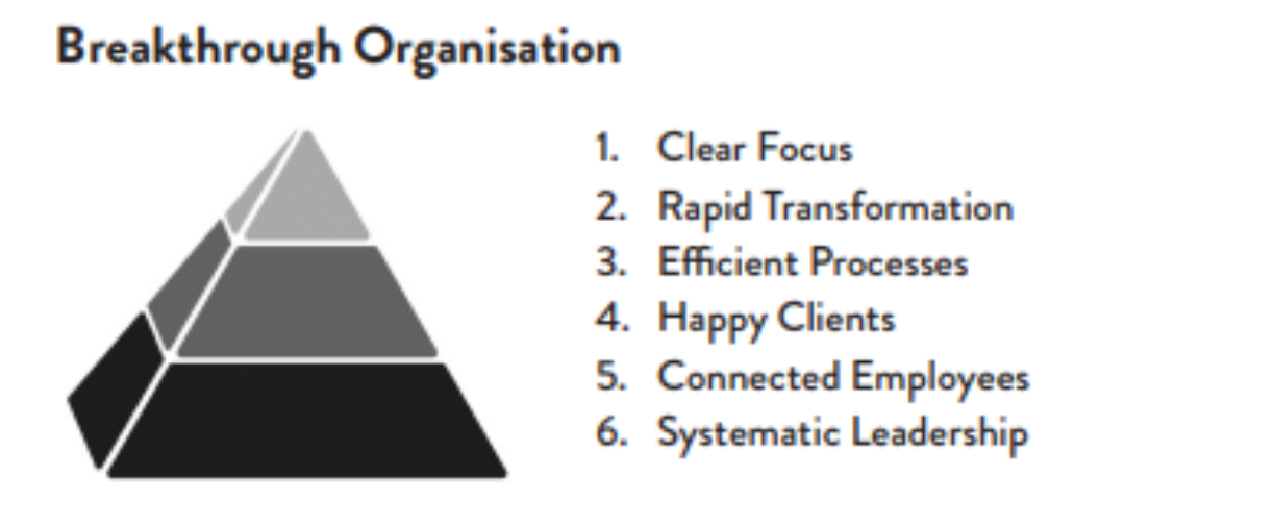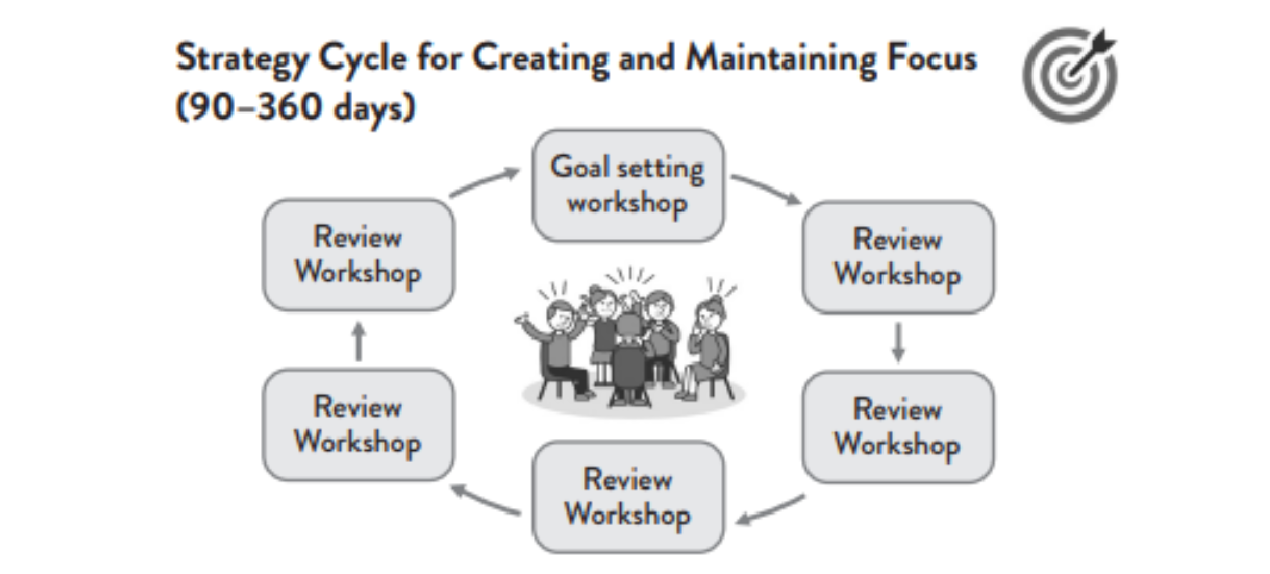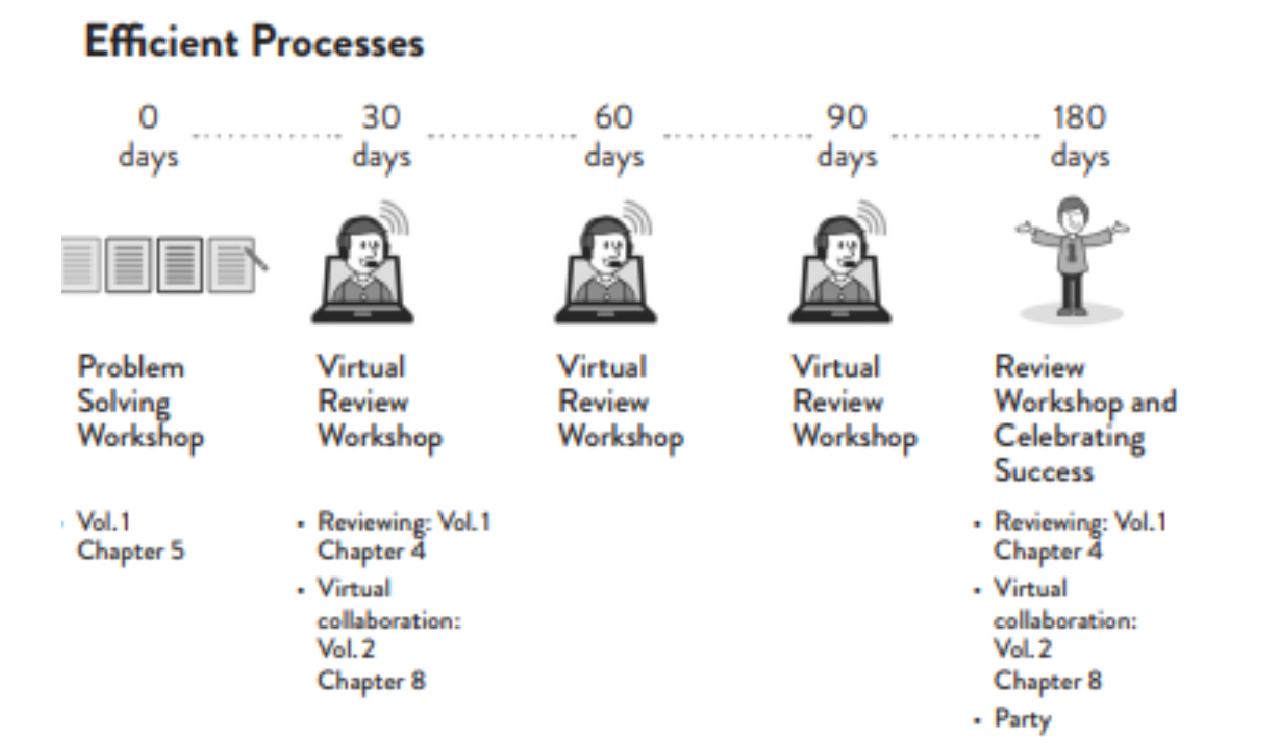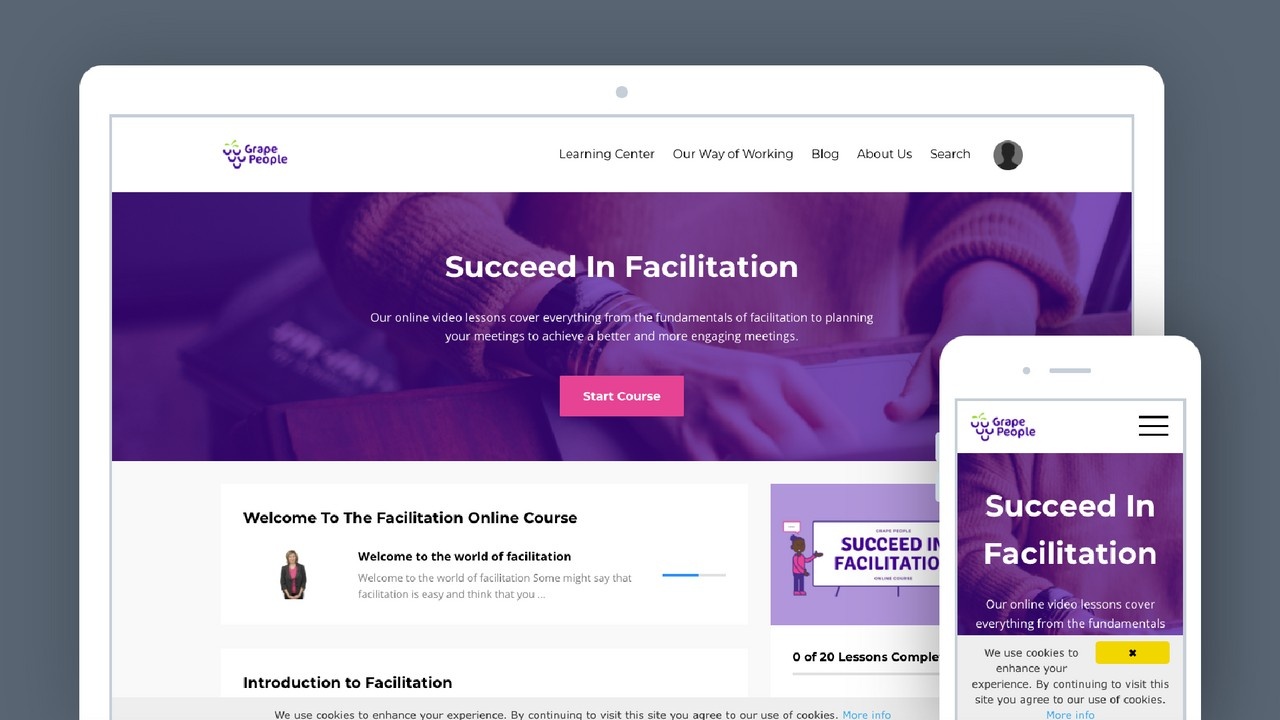Facilitating Innovation and Empowering Organisational change

When used regularly, facilitation helps teams perform at their best. It can even transform entire organisations. However, this does not happen after a single meeting or workshop. For facilitation to create organisational change, facilitative tools, workshops, and meetings need to be a regular occurrence. If this is achieved, then a breakthrough can happen. In fact, a breakthrough organisation may emerge. A breakthrough organisation is a system connected by dialogue. This dialectic connection creates better decision making and alignment. This chapter shows how to apply breakthrough decision-making tools, workshops, and meetings to develop a unified, aligned, agile, and efficient organisation.
A breakthrough organisation is: An agile and aligned system connected by dialogue on all levels.
Once a breakthrough organisation takes shape, the following features emerge and become stronger: clear focus, rapid transformation, efficient processes, happy clients, connected employees, and systematic leadership.

These features need to be developed and strengthened by regularly holding workshops and meetings that use breakthrough decision-making tools. People are required to communicate and collaborate as they participate in these sessions. As these tools are used more and more, the entire organisation becomes connected by dialogue and a positive feedback loop is developed; as the elements of a breakthrough organisation are strengthened, they positively benefit the organisation, which further supports the features of a breakthrough organisation. If you employ facilitation regularly and achieve a breakthrough organisation, then innovation will not be difficult to attain; it will be second nature.
The six key features of a breakthrough organisation are:
- clear focus
- rapid transformation
- efficient processes
- happy clients
- connected employees
- systematic leadership
Let’s review the first three of these features now: clear focus, rapid transformation, and efficient processes.
Clear focus
Focusing is the practice of stringing workshops together over an extended period of time to agree on common goals, remind people about goals and decisions, check in on the progress made towards reaching these goals and examine any obstacles that may have come up. The general formula is to run a goal-setting workshop and follow it with one or more review workshops. Keeping people in contact with each other and requiring them to use breakthrough decision-making tools repeatedly will make them examine points of view other than their own. Doing this enables someone to adopt new ideas more efficiently and understand what is best for the entire organisation.

Rapid transformation
Organisations do not follow the same structure. Depending on their size, industry, or company culture, the number of levels in an organisation varies. On one side are flat organisations that use a modern approach where everyone has agency and is involved in decision-making. On the other side are more traditional organisations that have a distinct hierarchy. These are your classic organisations that have a pyramid-shaped leadership structure. The size and structure of an organisation affect communication and how new ideas and policies are understood and adopted throughout the organisation.
Luckily, there is a solution; run a dedicated workshop for each level of the organisation to help them understand the new change. Then, continue as needed with workshops as you work your way down the levels of the organisational structure until you have traversed from the top to the bottom of the organisation. Doing so will interject dialogue throughout the organisation and allow it to rapidly transform as it pivots to a new strategy or adjusts to large-scale changes.
Efficient processes
If you could view an entire organisation as a whole and see how different parts work together, you might see something that resembles an engine. Or better yet, your view of the organisation looks like the inner workings of a fine watch; different parts spinning and rotating, pushing and pulling, all working together to create an output. It might feel like your organisation is completely unified on good days, but there are likely problem areas. Unlike an engine or a watch where the entire system is connected, an organisation consists of different teams or departments with their own goals and ways of working. For example, your Accounting Department will focus on expense reports, while your Digital Marketing Team will concentrate on advertising campaigns. Each team has an expected output that they are focusing on. As the teams work to produce their expected outputs, they work in isolation and independently of other teams. Processes do not work because they are not synchronised.

A key trait of Breakthrough Organisations is a willingness to quickly evaluate what is needed and get people together to make it happen. I have observed that organisations with this trait own a distinct strategic advantage over their competitors that do not. For example, if you are not scheduled to have a review meeting until next month, but you notice that people seem lost or uninspired, immediately take action to fix the issue. Take the time and spend the money needed to get all key participants together to solve the problem so that the organisation can perform at the level it should be. This ensures that challenges disappear as quickly as they arise, which is a very effective practice.
These three features are just a part of what makes up breakthrough organisations. They help foster innovation, but there is even more to learn. Utilise what you know so far, but keep learning about facilitation to maximise your ability to help people be creative and innovate.
Our facilitation course gives you a simple and effective framework for designing workshops and the best tools for each stage to guarantee your workshop success.
This course is a great way to learn how to succeed in facilitation.
Join the course >>
About the trainer:
Pepe Nummi is a trailblazer of facilitation and an author in Finland. He is the first certified professional facilitator in the country and one of the founders of Grape People – Finland’s first company focusing on facilitation. Over the course of his long career, he has trained over 15,000 people in more than 20 different countries.
Get to know Pepe: LinkedIn | Twitter
Feel free to reach out in case you would like a tailored training
for your team or organization: [email protected].
We are more than happy to help you!



